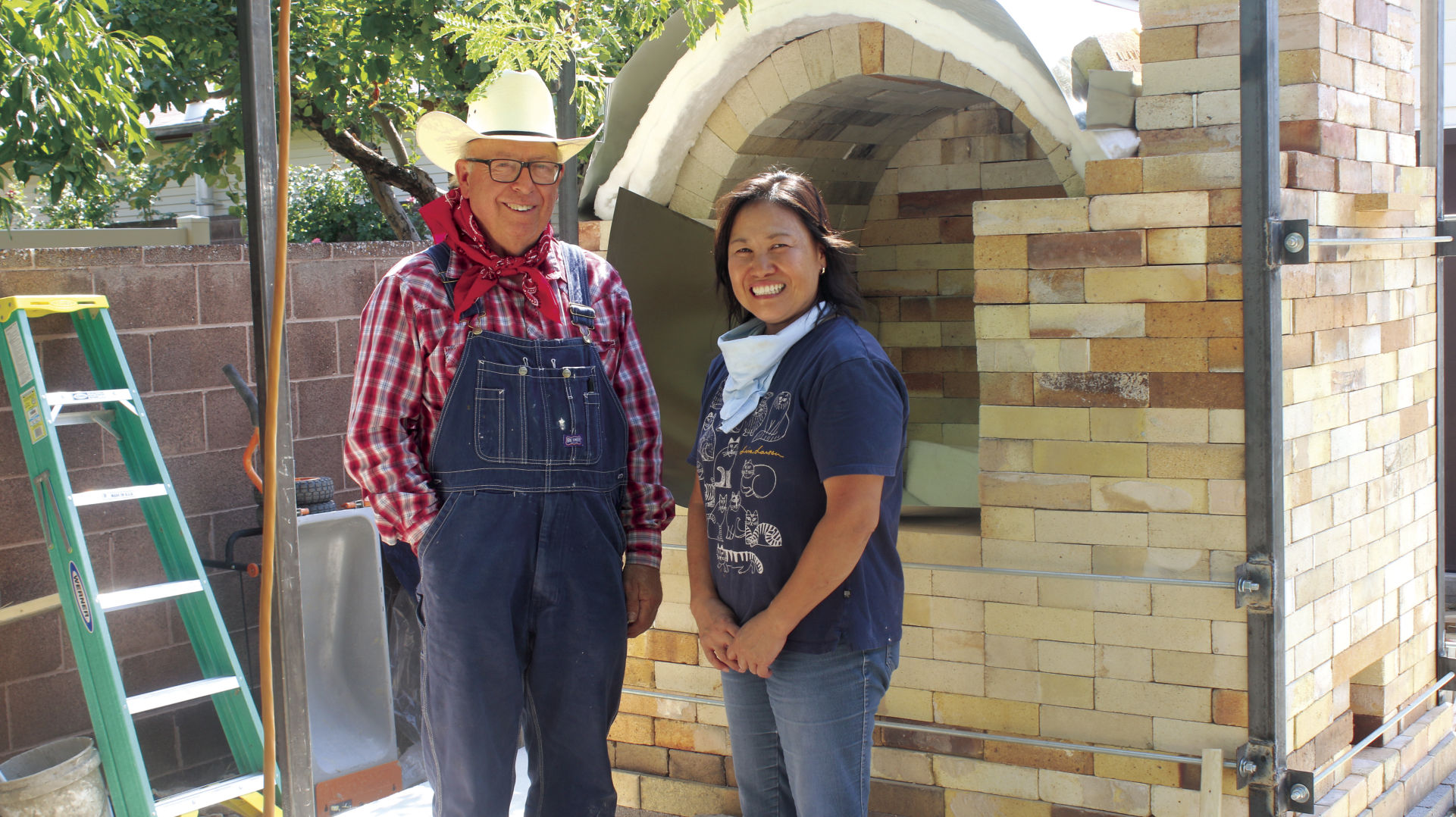The only wood fired kiln of its type in the United States was built last week in Helper during a Community Kiln Building Workshop cosponsored by Utah State University Eastern and the Musinia Art Center.
Supervised by Japanese ceramic artist, Mayumi Makino Kiefer, the Ittekoi was assembled at The Dawn’s Light Studio at 128 Uintah, in Helper. The first version built outside the United States was built on the campus of the University of Oklahoma, in Norma, but was recently disassembled. While the University of Oklahoma plans on reassembling their Ittekoi, for now, the Ittekoi at Helper is the only one outside of Japan at this time. “Ittekoi” means “come and go” in Japanese and refers to the fact the flames and ash make a near full circle inside the kiln’s chamber.
Most of the bricks for this kiln were from a generous donation from the Pioneer Craft House in Salt Lake City.
“It’s a unique design that fires more quickly than ancient kilns, but with similar results,” said Mayumi. “Almost all the kilns in the United States use electricity or gas to fire pottery.
“While there are several types of wood fired kilns in the United States, including some designs imported from Asia, and even one designed by Utah State University’s John Neely, called the ‘Train Kiln,’ which is one of the most popular and efficient wood kiln designs from the U.S.” said Musinia Art Center Executive Director, Steven Kiefer. “Early wood firing began with pit firing, as done by Native Americans, including the Pueblo and Mississippian cultures.
“Originally from Osaka, Mayumi became interested in ceramics while pursuing a degree in engineering. She not only garnered her engineering degree, but also received a degree in ceramics from Edison Community college before receiving her Bachelor of Fine Arts in Ceramics from Ohio Northern University. She is currently in her final year of a three-year Masters of Fine Arts at the University of Oklahoma, where she built the first ittekoi kiln.
Mayumi is one of three Graduate Fellows to receive honors from the National Council On Education for the Ceramic Arts (NCECA), which included a $2,000 award to build the Ittekoi in Helper. Additionally, the Norman Arts Council, Oklahoma provided a $1,500 award for travel, and the $500 from University of Oklahoma’s Weitzenhoffer Family College of Fine Arts. The State of Utah and the National Endowment for the Arts’ ArtWorks, matched with an additional $2,287 in funding.
Some of Mayumi‘s works, along with Guest Artist Andy Watson, Professor Chris Mayusik of USU Eastern and advisor Chris Pate were exhibited at the USU Eastern’s Gallery East. Mayumi‘s centerpiece, entitled “Homage to Ii Naotora,” is a ceramic and silk fabric blend to recreate a life-sized Samurai armor.
“I got the idea from the Chinese Terracotta Soldiers,” she said. “It pays tribute to one of the most famous female samurais in Japanese history.”
Andy Watson, a ceramic artist from Fairfield, Mont., who taught ceramics in Utah for many years, also exhibited and donated works to USU Eastern. Watson is famous for his pots, jugs, jars and bottles with carved or stained surfaces. As one of his most important contributions to Utah, Watson made 2,900 pots, 100 for each county, with glaze minerals and clay from each of Utah’s 29 counties. He then donated these pots to raise money to support children’s programs and women’s shelters throughout the state.
Chris Kanyusik, ceramics professor at USU Eastern works in both ceramics and mixed media, also exhibited this past week. Chris teaches ceramics and 3D design at USUE.
Chris Pate of Oregon, an advisory member of Musinia Art Center, also exhibited wood-fired vases and chalices in the exhibit.
During the week-long activities, several mini workshops and round table discussions were held on the history of clay, wood firing, glazes and the impact of wood-firing on building community.
Due to the nearby wildfires, the first firing of the Ittekoi has been postponed to early fall. Persons wishing to participate in the first firing may contact Steven Kiefer at the Musinia Art Center at 937-216-6759.
(Editor’s note: An earlier version of this story, including the one published in Tuesday’s Sun Advocate, contained a number of unfortunate errors. The Sun Advocate corrects its mistakes. The above is a corrected version of the story. It will also appear in next Tuesday’s newspaper.)
CORRECTED: Unique Wood-fired Kiln Comes to Helper

Artists Andy Watson and Mayumi Makino Kiefer stand in front of an Ittekoi, a unique type of Japanese wood-fired kiln, and the only one of its kind currently in the U.S. The kiln was assembled in Helper. A firing ceremony will be held later this fall. Photos by Andy Hislop
